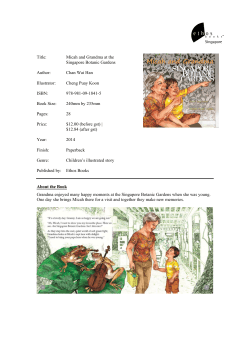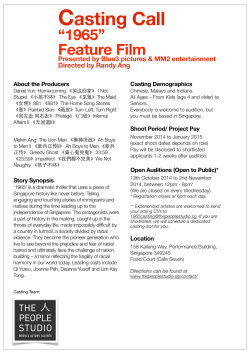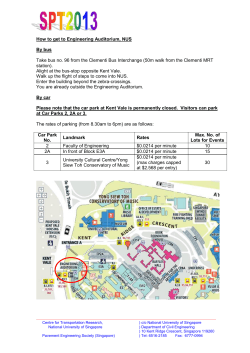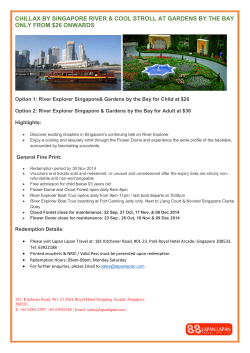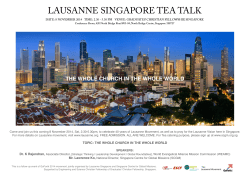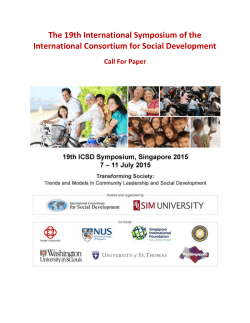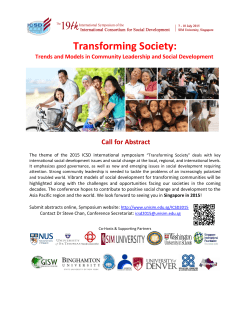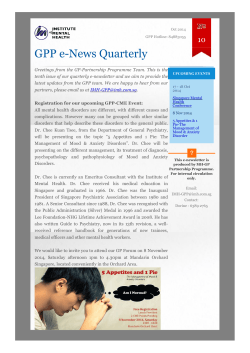
Document 447071
No. 227 – 18 November 2014 www.rsis.edu.sg RSIS Commentary is a platform to provide timely and, where appropriate, policy-relevant commentary and analysis of topical issues and contemporary developments. The views of the authors are their own and do not represent the official position of the S. Rajaratnam School of International Studies, NTU. These commentaries may be reproduced electronically or in print with prior permission from RSIS and due recognition to the author(s) and RSIS. Please email: RSISPublications@ntu.edu.sg for feedback to the Editor RSIS Commentary, Yang Razali Kassim. Syphoning Confidence: Piracy and Fuel Theft in Southeast Asia By Euan Graham Synopsis A spate of fuel-syphoning attacks on small tankers in the Straits of Malacca and South China Sea is helping to perpetuate a misleading narrative of resurgent piracy in Southeast Asia. However, they reveal transnational dimensions to maritime crime that require a concerted stakeholder response. Commentary A STATISTICAL increase in the number of predations on shipping reported by the Regional Cooperation Agreement on Combating Piracy and Armed Robbery against Ships in Asia (ReCAAP) in the first half of 2014 has fed concerns – amplified by media and private security firms – that piracy is in the ascendant in and around Southeast Asia. While ReCAAP’s inter-governmental Information Sharing Centre (ISC) reported a year-on-year “surge” in first-half incidents, from 61 in 2013 to 90 in 2014, many of these involved petty theft. Failure to differentiate serious attacks from relatively minor incidents commonly overstates the threat. However, perceptions matter where confidence is concerned. Tanker targets and syndicated syphoning? ReCAAP’s third quarter report reveals a marked overall improvement since July. Incidents dropped to 39, from 58 in the April-June period. Predations in Indonesian ports and anchorages have fallen continuously throughout 2014. Most serious incidents involve illegal fuel syphoning in the Straits of Malacca and South China Sea. Ten small tankers were hit between April and September: Sri Phang Nga, Orapin 4, Budi Mersa Dua, Ai Maru, Moresby 9, Oriental Glory, VL14, Orapin 2, Pentrader and Naniwa Maru. To put this in perspective, since 2011 a total of 18 syphoning attacks have been reported of which 13 were successful. Most syphoning attacks occur at night, well outside Singapore’s port limits frequently in the lesspoliced waters north of Indonesia’s Bintan island. Small product tankers under 5,000 tons are boarded by small groups of lightly armed pirates and taken into the South China Sea; their names sometimes re-painted and communications equipment disabled en route to a rendezvous point with a second vessel. Once alongside, the fuel can be offloaded within hours. Shipments of Marine Gas Oil (MGO) are targeted for several reasons. First, MGO sold illicitly is lucrative, fetching above US$500 per tonne. Illegal bunkering is a perennial problem beyond port limits. In remote areas, the black market may be the easiest way to obtain marine fuel. Second, loaded product tankers present inviting targets, being low, slow and easily trackable. Third, many attacks betray the hallmarks of preplanned, syndicate involvement: syphoning operations are well organised, conducted with apparent foreknowledge of the cargo fuel type and how to dispose of it. Crews are normally unharmed. ReCAAP’s most recent report notes: “(t)he possibility of conspiracy between the crew of the vessel and pirates; between the shipping company and pirates cannot be ruled out”. Suspicions that “piracy” is being used as a cover for insurance fraud have mounted as some operators feature disproportionately in the statistics. Targeted syphoning attacks, with strong indications of insider involvement, do not pose a generalised threat to shipping or the energy trade, although attacks do still occur on vulnerable vessel types elsewhere within the Straits of Malacca Traffic Separation Scheme. Product tankers are at higher risk with syphoning incidents continuing to occur roughly on a monthly basis. Coordinated response Supply-demand market factors inform this risk. The recent collapse of the bunkering firm OW has stoked fears of shortages triggering more syphoning attacks. However, Singapore’s Maritime and Port Authority has announced efforts to maintain adequate supplies of marine fuels. Lower oil prices (already boosting crude shipments via Malacca to China) should temper any inflationary effect beyond the immediate short-term. Syphoning attacks, lasting longer than most pirate boardings in Southeast Asia, have tested the response capabilities of ReCAAP’s ISC and the mainly inter-naval Information Fusion Centre (IFC), both hosted in Singapore. While ReCAAP’s ISC acts as a piracy information sharing node between designated national focal points and the shipping industry, the IFC’s direct line to operations centres in the region brings an additional “cueing” function. All three littoral states have deployed navy or coast guard vessels to the scene. When the Ai Maru, a product tanker carrying 1,500 tonnes of MGO, was boarded while transiting the South China Sea in June, a prompt response from Singaporean and Malaysian navy ships disrupted the syphoning before it could be completed, although the perpetrators escaped. Information provided by shipping companies to IFC and ISC, which also share with each other, has played a valuable supporting role. Coordinated law enforcement responses at sea and effective information sharing may help account for the declining incidence of syphoning attacks in the third quarter. However, the successful attack on MT Sunrise 698, hijacked in October off Anambas island in the South China Sea en route from Singapore to Vietnam demonstrates that the threat to product tankers remains active. Moreover, no suspect has been apprehended in connection with the syphoning attacks. More measures needed Therefore, further measures may be warranted in three areas: • First, arresting pirates at the scene operating on a “for-hire” basis will not seriously disrupt fuelsmuggling syndicates, whose centre of gravity is land-based and transnational. Interpol’s beefed-up regional presence in Singapore could play a useful role by galvanising maritime law enforcement cooperation. Identification and prosecution of individuals within the syndicate hierarchy would be a powerful deterrent. September’s break-up by Singapore’s Police Coast Guard of an MGO-smuggling ring using modified tugs represents a step in the right direction, including the arrest of local financiers. • Second, product tanker owners inside or outside the major shipping associations could mitigate risk by adopting a regional version of Best Management Practices (BMP), which prescribe self-help onboard security measures originally designed to “harden” merchant ships against piracy threats in the Indian Ocean. This would encourage smaller vessels to maintain better security standards and avoid unnecessary risks like anchoring outside port limits. For coastal states in Southeast Asia, BMP is preferable to the use of armed guards onboard merchant ships. To incentivise compliance, insurers should be encouraged to factor BMP into their actuarial assessments. • Third, in the lead-up to a regional BMP rollout, Singapore, Malaysia and Indonesia could agree to extend the Malacca Strait Patrols to “tag-team” a continuous constabulary presence in the southern reaches of the South China Sea during the hours of darkness. This would send a collaborative, deterrent signal to the pirates and reduce reaction times considerably. Euan Graham is a Senior Fellow at the S. Rajaratnam School of International Studies (RSIS), Nanyang Technological University. Nanyang Technological University Block S4, Level B4, 50 Nanyang Avenue, Singapore 639798 Tel: +65 6790 6982 | Fax: +65 6794 0617 | www.rsis.edu.sg
© Copyright 2025

